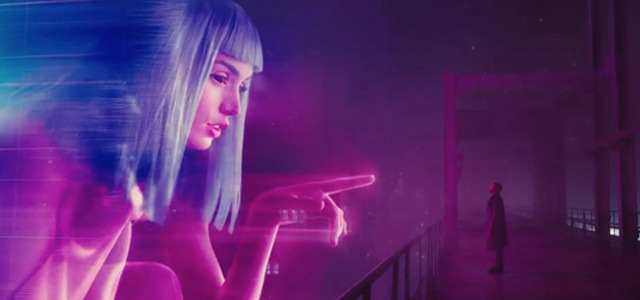*Warning if you have not seen Blade Runner 2049 read our spoiler-free review as this commentary on the films’ themes reveals major plot points.
News that the sequel to the cult classic Blade Runner – Blade Runner 2049 — has had a lacklustre performance at the box office is a hopeful sign that we have moved on from many of the themes and tropes evident in this sequel.
Be it cautionary tale or misjudged narrative, Blade Runner 2049 posits a future where patriarchal capitalism seeks to create a humanity seemingly devoid of diversity and the need for women.
Not surprisingly, viewer numbers have skewed male by a large majority and women have justifiably avoided the film.
There are obviously a number of factors to this, but even the marketing of the film seems to reveal a heavy reliance on the male gaze and a white male-centric storyline. Some critics have also pointed to the films’ lack of diversity. This is despite the fact that, at least from its production design, we are presented with an enlightened melting-pot Los Angeles of the future that has fused many cultures into one rain-soaked homogeny.
Many critics have fawned over the gorgeous visual effects in the film. But scrutiny of these images — like the gigantic holographic billboards advertising the disturbingly compliant nude holographic companion Joi (Ana de Armas) and an orange-hued wasteland comprised of statues of women in various sexualised forms of undress – would seem to suggest that females in the audience would be more than a little turned off. But haven’t we moved past these science fiction archetypes?
The films’ visual components, coupled with a narrative that involves two white males discovering their identities and slowly wrestling with (as the hero’s journey tropes are inverted and undermined) the notion that the world has certainly been about them and their quest for personhood may further prove the films limited appeal with a broad audience.
While the original film posited a dank LA landscape that was a melting pot of Asian influenced streetscapes aside from a couple of actors it’s cast lacked diversity. In 1982 this could be considered a naïve look into the future, but in 2017 this is more alarming than entertaining.
It’s hard to judge whether the lack of diversity on display in both films is a symptom of persistent passive racism in Hollywood, or a larger mythological challenge to the underlying ethic that has led to such racism?
2049 goes even further to suggest there isn’t a need for ethnic diversity when we examine the character of Wallace (Jared Leto), a creator and venture capitalist who seems bent on creating a white slave workforce. This is evident in a scene where he and the curiously named Luv (Sylvia Hoeks) wander through a set piece full of white males and females in giant display cases. Wallace’s end game appears to be to remove human women’s reproductive rights by attempting to find the holy grail — a replicant (the name for androids in the Blade Runner universe) that can bear a child.
Stereotypical female archetypes abound in this film (again not unlike the original film), with women sidelined as either sex workers, computerised compliant home companions that learn via artificial intelligence how to please their partners, or a one-note henchwoman. The only character who has a hint of depth is sidelined quickly. But even this character is a cypher of a male fantasy. And perhaps even more troubling is that the most disturbing violence in the film is directed (with cinematic precision) towards women.
A recent article by actor, writer and columnist Kate Hardie suggests that filmmakers need to start taking responsibility for the way women are portrayed in films, suggesting that it might be time to link abuse with film content.
Let’s take a leap here and ask the question “What makes a human?” If the film is suggesting that replicants may have a soul despite their origins and are somehow more human than humans, then the archetypes the women represent here and their agency and treatment in the narrative are even more problematic.
As Devon Maloney at Wired has noted, “2049’s filmmakers have attempted to tell a story about personhood in 2017 without actually considering the urgent politics that surround who gets to be a person in 2017. And in an era that begs for this kind of reinvention, its failure flattens its message into one more retirement for the books.”
The world speculated here is a troubling one. It is a dystopian future in which some sort of white supremacy ethic – all tangled up with patriarchal capitalism, male gaze aesthetics, and an explicit endorsement of slavery – has gone seemingly unchallenged by concerns of justice in any form. Again, it is hard to grasp whether or not this is a prophetic film about the nature patriarchal misogyny or a cautionary tale.
Director Denis Villeneuve’s last film was Arrival, which was possibly 2016’s best film. It’s main character was a women, and it’s theme of understanding the “other” flipped the often used archetypal alien apocalypse genre on its head. This was a thinking persons’ science fiction film.
2049 is not so much a thinking persons’ sci-fi film as a future that we should hope never comes to pass.
Adrian Drayton












